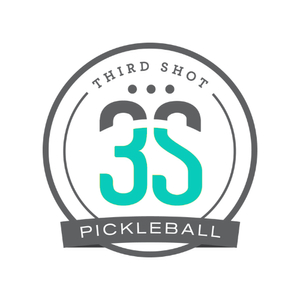“Mark. You’ll never believe what just happened”. This was the start of an email I received back in 2016. “I have been telling my pickleball student for 6 months that he was (unwisely) moving forward after he served and he was getting burned. He nodded and said he understood, but he never changed his behaviour. Then, he happened to see a video you made — featuring him wandering into the court— and he called me to say that he now believes me. All of the sudden, he didn’t make this mistake anymore.”
I was very happy to receive this note. Helping people to play better pickleball is, after all, what I do as a profession. And it is always gratifying to know that my work made a difference. But this story points to a powerful fact: if you want to improve your pickleball game, video can be an incredibly useful tool.
Why It Works
Humans have an incredible knack for not paying attention to what we are doing. We live largely internal lives and this limits our perspective. Using video allows you to see yourself from the outside and this can bring into focus the gap between what we think we are doing and what is really going on. Further, we can watch and re-watch the video as often as we want. We can slow down or freeze clips so that we can more precisely pay attention to details. Video gives us the ability to manipulate time.
Getting the Most From Video
Today’s technology makes capturing yourself on video really easy. A couple taps on most phones and you’re already filming. Here are a few tips for recording yourself as effectively as possible:
1) The right equipment. Whether you are using a phone or a dedicated camera, an adjustable tripod is super-handy. This way you can put the camera in place without worrying that it is going to fall over. Also, it is important to make sure you have sufficient memory. Video takes up a lot of space (don’t worry, you can delete it later) so make sure you’ve got room on your device. If you are using a video camera, SD cards are fairly inexpensive and can be scrubbed clean once you’re done with them.
2) Know your purpose. If you want to capture the whole game, it is important to set up your camera in a way that the whole court is in the frame. Positioning the camera as high up as possible is a great way to do this. If you’re looking for something specific (say, how you move at the kitchen line) you can put your camera in a place that will emphasize just what you need. Each facility is different so some experimentation will be needed.
3) Get some feedback. There is a lot that you can pick up on your own but having a knowledgable coach can help you see things in your video that you didn’t notice before. Whether you use our personal video analysis. or share it with a coach you already trust, having a pro take a look can really help.
Traps
I have made a tonne of mistakes when working with video. I’ve also had some funny things happen. Here’s a short list of some of them:
Thinking the camera is recording when it is off.
Thinking the camera is off when it is actually recording.
Dropping the camera from 10 feet up.
Accidentally deleting fantastic video.
Unknowingly recording a married couple discussing their impeding divorce.
Running out of power at the critical moment.
Having a dog pee on my camera as it was leaning against a fence.
Forgetting the camera at the courts overnight (it was there when I returned the next day).
As you can see, things happen. But as with anything you’ll get better with practice. You’ll find tricks and shortcuts that will save you time and make your life — and your pickleball game — better. Oh, and you’ll thank yourself when you just happen to capture that amazing around the post shot or wicked put away volley!




